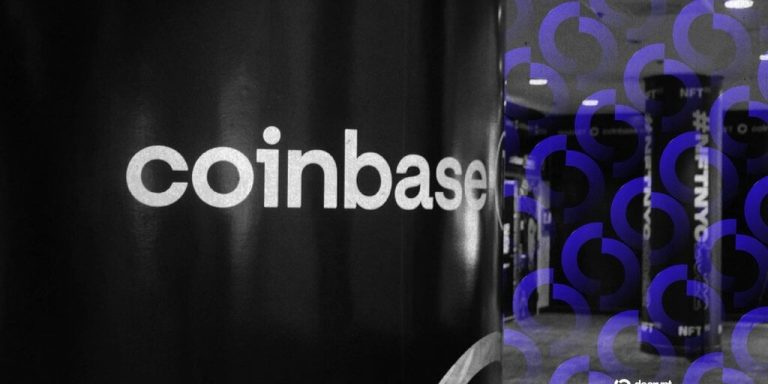The race to define the future of money is speeding up—and according to industry leaders, stablecoins are right at the center.
“It’s clear that the most important item on our roadmap is understanding how quickly we can move, and it’s obvious that the next three years are the fastest we will ever see in the development of digital assets,” said Sergio Mello, head of stablecoins at Anchorage Digital during Paxos’ Global Dollar Network event in New York City.
“2025 will have clarity here, 2026 will have clarity elsewhere, and 2027 is when it’s all going to happen.”
Mello wasn’t speaking in hypotheticals. From his vantage point inside one of the first federally chartered crypto banks in the U.S., he sees stablecoins not as niche financial instruments but as a foundational upgrade to the global monetary system.
“Stablecoins are a better representation of fiat, a better way to transfer fiat, but it’s really just money that you’re moving,” he said. “We’re merging the transport layer and the value layer into the same instrument.”
This evolution of money is far from theoretical.
According to Mello, industry players across payment networks, custodians, and financial service providers are laying the groundwork for what he called a “critical mass” of institutional adoption — something he predicted will hit within the next 12 to 24 months, especially in payments. “That’s where the money is going,” he said.
From experiment to infrastructure
Stablecoins were once seen as tools for crypto speculators or offshore arbitrageurs. However, according to Raj Dhamodharan, EVP at Mastercard, that perception is shifting fast.
Stablecoins now function as the “money movement layer” across increasingly mainstream use cases, he said, adding that cross-border remittances, B2B payments, and even retail spending are already seeing traction.
For example, Mastercard is enabling cards where users can choose which currency — fiat or stablecoin — they want to spend, while merchants can choose what they want to receive. “We’ve started doing that with cards. We’ve started doing that with remittances,” Dhamodharan said.
Ahmed Zifzaf of Worldpay echoed this, describing how their customers use stablecoins for real-time treasury management. “You can start to see how you accelerate all of these payment and financial flows,” he said, noting that Worldpay is focused on working with “battle-tested” blockchains like Solana to scale those efforts.
The bankers’ dilemma
Still, not every financial institution is rushing in.
“What constraints do you have because you are a bank?” asked Luca Cosentino of Cross River. The barriers are real, he said — legacy tech stacks, compliance risk, and cultural resistance all slow the pace of innovation. But the split in strategy is becoming clear.
“Certain banks are not going to touch crypto […] some others will focus on custody […] some others are going to be focused on money movements,” he said. “But I have very little doubt that a huge portion of the banks […] is going to go into crypto one way or another.”
Sunil Sachdev from Fiserv noted the same divide. “We had about 12 banks ready to go,” he said, describing how new rules under SAB 121 effectively froze many of those plans. “Then everything, in just one day, kind of closed shop.” But the interest hasn’t gone away, particularly among smaller banks.
“The bigger guys seem to be cautious,” he said. “The smaller banks are much more aggressive because they’re looking to use this as an opportunity to bring in low-cost deposits. They’re looking at this as an opportunity to differentiate themselves.”
He painted a vivid picture of how a small-town bank might evolve: three branches, deep community ties, and now a road map to become a “trusted node” in a global blockchain network, offering tokenized financial products not available elsewhere.
Better than Fiat
While many in the industry assume institutions will lead adoption, Kraken’s Mark Greenberg isn’t so sure. “Americans might be actually some of the last groups to adopt a global dollar,” he said. But outside the U.S., demand is strong.
“I do believe a global dollar is better than holding fiat, and we’re going to see it,” he said, adding that this is more important in countries where inflation erodes value and yield is scarce.
And it won’t just be used for savings. “You save your money there; you use a card there. At some point, you transfer to your friends, you pay your bills,” he said. “And maybe you buy a meme coin or a stock.”
Mike Dudas of 6th Man Ventures suggested the app layer will drive consumer behavior. Stablecoins “is the fundamental thing that people need to be able to store value in,” he said. “And now, because of Visa, Mastercard, and off-ramp providers, I can actually spend those dollars I get.”
Sheraz Shere of the Solana Foundation added that the infrastructure now exists to support those ambitions. “There’s this assumption that TradFi infrastructure is good,” Greenberg said. “There are outages there [TradFi institutions] too.” Instead of talking up performance, he said the best strategy is to let results speak for themselves. “The less we talk about it, the better it is.”
A play to bolster the U.S. dollar’s dominance
While stablecoins are often discussed through the lens of innovation and financial inclusion, policymakers may be thinking about something more immediate: demand for U.S. debt, according to former CFTC chair Chris Giancarlo.
“95% of the driving force behind stablecoin legislation is to create more demand for U.S. Treasuries,” he said. “The remaining 5% is simply working out which regulator gets oversight.”
It’s not a crypto-driven narrative, Giancarlo argued. Stablecoins are now being viewed as a way to bolster the U.S. dollar’s global role by digitizing and distributing it at scale. “Stablecoins have demonstrated that the global demand for dollars far outstrips the supply in an analog world, and the beauty of stablecoins is meeting that demand,” he said.
Jonathan Levin, CEO of Chainalysis, said banks are entering the space cautiously, with more focus on asset stability and market contagion than most crypto-native firms. “When it comes to banks, they look at it and they’re saying: I need to not just understand the stability of my asset, I need to understand the stability of everyone else’s assets.”
According to Levin, data will be key. Issuers need to track performance across thousands of currency pairs and venues, while also managing risks without compromising decentralization. “That’s a data challenge that is going to be vital,” he said.
The Years Ahead
As legislative efforts advance in Washington, many panelists agreed that durable rules—on reserves, on-ramps, disclosures — are overdue. But the opportunity ahead is bigger than compliance.
“The bottom line is, even if the politicians are focused on demand for treasuries, it’s in the American interest to have the dollar continue to serve as the world’s reserve currency,” Giancarlo said.
By the end of the day, one theme cut across all four panels: stablecoins are no longer an experiment. Whether small banks are searching for relevance, corporations are chasing faster settlements, or regulators are responding to Treasury market pressure, the stablecoin ecosystem is moving fast—and the road to 2027 could decide how global finance is wired for the next generation.
Read more: Stablecoins Will Expand Beyond Crypto Trading, Become Part of Mainstream Economy, Citi Predicts











